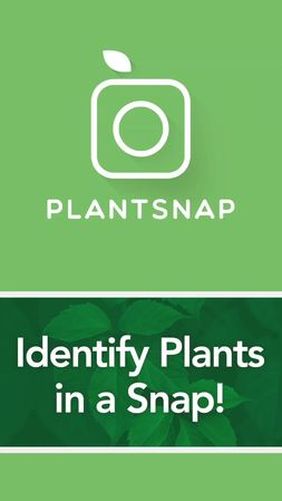As an environmental science teacher and science department lead teacher, the first digital field guide for use in species identification that I heard about, used, and promoted is:
Leafsnap is a mobile application that helps users identify tree species by snapping pictures of leaves and flowers. It is currently a digital field guide for trees in the Northeastern United States and Canada, but it is growing to include trees from the entire continental U.S. and the U.K. It is a project by researchers from Columbia University, University of Maryland, and the Smithsonian Institution (http://leafsnap.com/about/).
 Leafsnap is free and very easy to use. The features in the menu at the bottom of the main screen include Games, Browse, Collection, Options, and Snap It. The Snap It option takes the user to a screen, which has very easy to follow instructions right on the screen.
Leafsnap is free and very easy to use. The features in the menu at the bottom of the main screen include Games, Browse, Collection, Options, and Snap It. The Snap It option takes the user to a screen, which has very easy to follow instructions right on the screen.The app accesses the smartphone's camera and a picture is sent into thei database. It only takes a few moments to have several options pop up for what species they leaf may be from. With each suggestion possibility, there is a high-resolution photo with a scale built-in. This is so that the user can look more closely at the different photos to determine which is the most like the sample they have and therefore which species they have.
As I used Leafsnap this week for this review, I found that very few of the leaves I selected from my yard were recognized by the app. It turns out I was choosing plants, not trees, and also species that are not native to the northeastern U.S. or Canada. This was frustrating at first, but as I looked into the scope of the app I realized that it was my fault for choosing the wrong type of species.
One cool feature of leafsnap is that it "turns users into citizen scientists, automatically sharing images, species identifications, and geo-coded stamps of species locations with a community of scientists who will use the stream of data to map and monitor the ebb and flow of flora" (http://leafsnap.com/about/). This app is a really great option for use with students in identifying trees.
However, since it turned out that I seemed to be interested in the plants around my neighborhood in addition to the trees, I searched around the app store and found:
Plantsnap is a digital field guide that helps users identify plants based on images of their leaves and flowers. It was created by Eric Ralls, who is the CEO of RedOrbit.com and Earth.com and "has long aspired to merge technology with a love for nature and our planet" (https://www.plantsnap.com/who-we-are/). It has 585,000 species in its databases and over a million images.
 I found Plantsnap to be as easy to use as Leafsnap, with many of the same features. The starting page shows a menu that includes the options My Collection, Explore, Snap!, Search and More... The Explore feature appears to be more functional with the paid version of the app, because it will show the location of other members' finds. The free version Explore feature does show a limited amount of locations, for which I cannot tell why they are highlighted except that they each seem to house a lot of plants (ie: Green Spring Gardens or The American University Arboretum).
I found Plantsnap to be as easy to use as Leafsnap, with many of the same features. The starting page shows a menu that includes the options My Collection, Explore, Snap!, Search and More... The Explore feature appears to be more functional with the paid version of the app, because it will show the location of other members' finds. The free version Explore feature does show a limited amount of locations, for which I cannot tell why they are highlighted except that they each seem to house a lot of plants (ie: Green Spring Gardens or The American University Arboretum).One cool feature of Plantsnap is that it has an Auto Detection feature in the snapping function that prompts the user when to snap the picture for best results. This saves a bit of time because it can be hard to get an image that is recognized by either of the apps on the first try. Another cool feature is the Augmented Reality option, which superimposes graphics over top the image the camera picks up. The app prompts the user to look for flowers and leaves through their camera and to click on any bubbles that pop up. When clicked, the bubbles turn into little molecules of carbon dioxide and oxygen floating in and out of the leaves. This is a great feature for students!
Both of these digital tools are awesome ways to bring ecology to life for my students. I am excited to let them get in touch with the nature right around them as they become familiar with the individual species they come across.










